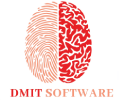How Schools Can Integrate DMIT for Better Student Development
The education sector is constantly evolving, and schools are always exploring innovative methods to enhance student growth. One such emerging tool is DMIT (Dermatoglyphics Multiple Intelligence Test). By leveraging the power of fingerprints, DMIT offers unique insights into students’ cognitive strengths, learning styles, emotional well-being, and even career preferences.
But what exactly is DMIT, and how can schools utilize it to create a more targeted and efficient approach to education? This blog explores the science behind DMIT, its benefits in schools, practical implementation strategies, and examples of success stories. If you’re looking for tools to foster child-centric education and improve student outcomes, read on.
Understanding DMIT
What is DMIT and how does it work?
DMIT is a scientific study based on the analysis of fingerprints. It operates on the principle that the patterns of our fingerprints correlate with brain development and cognitive abilities. DMIT reveals unique characteristics about an individual, such as:
- Multiple Intelligences: Identifying whether a student is more inclined toward logical, linguistic, spatial, or kinesthetic intelligence, among others.
- Learning Styles: Understanding if a student learns best through visual, auditory, or kinesthetic methods.
- Cognitive Abilities: Gaining insights into memory, analytical thinking, and problem-solving skills.
- Behavioral Traits: Assessing emotional well-being, stress management, and adaptability.
Using non-invasive fingerprint scanning, schools can gain a deeper understanding of their students and build personalized strategies to nurture their growth.
Benefits of DMIT in Schools
Integrating DMIT in education offers several transformative benefits, including personalized learning paths and improved student outcomes. Let’s break it down:
Improved Academic Performance
By identifying a student’s cognitive strengths and weaknesses, teachers can tailor their approach to help students excel in academics. For instance:
- A visual learner may benefit from graphically rich materials.
- A kinesthetic learner might thrive through hands-on experiments.
This adaptive approach ensures that every student achieves their maximum potential.
Personalized Learning with DMIT
One of the significant advantages of DMIT is its emphasis on individual learning styles. Unlike traditional one-size-fits-all methods, DMIT enables schools to:
- Customize study plans for each student.
- Create engaging lesson plans that cater to diverse learning preferences.
- Address specific areas where a student struggles, enhancing overall concept understanding.
Career and Skill Guidance
The DMIT report provides a roadmap for students’ future career paths. By identifying a student’s natural inclinations and skill sets early on, schools can:
- Provide focused extracurricular programs (e.g., STEM for those inclined toward logical intelligence).
- Partner with career counselors to guide students toward compatible professions.
- Help students develop key life skills that align with their career aspirations.
Child-Centered Education
With DMIT, schools can implement a more child-centric approach to learning. Instead of rigid curriculums, personalized education makes students feel valued, fosters confidence, and promotes emotional well-being.
Implementation Strategies
Here’s how schools can successfully integrate DMIT for better student development:
1. Start with Awareness Efforts
Educate teachers, parents, and administrators about the science of DMIT and its long-term benefits. Hosting workshops or seminars can go a long way in eliminating skepticism.
2. Partner with DMIT Professionals
Collaborate with certified DMIT practitioners who can conduct efficient scans and provide accurate reports. Ensure these professionals are well-vetted for credibility and quality assurance.
3. Include DMIT in Assessments
Integrate DMIT alongside standard assessment tools to complement academic evaluations. This holistic approach offers a clearer picture of the student’s overall growth.
4. Train Educators
Train teachers and counselors to interpret DMIT results and incorporate these insights into their teaching methods, lesson development, and class structuring.
5. Regular Reviews
Schedule periodic DMIT assessments and review changes in students’ growth patterns. This ongoing process ensures that educational strategies remain effective and adaptable.
Sample Implementation Timeline
| Stage | Action | Timeframe |
|---|---|---|
| Information Campaign | Parent-teacher seminars on DMIT | Month 1 |
| Partner Selection | Collaborate with DMIT experts | Month 2 |
| Pilot Application | Conduct initial DMIT assessments | Months 3-4 |
| Educator Training | Workshops for teachers | Months 5-6 |
| Full Integration | Introduce DMIT into the curriculum | Start of next academic year |
Success Stories A Closer Look
Case Study 1. Pinnacle High School
Pinnacle High School implemented DMIT to bridge performance gaps between students. They noticed that incorporating DMIT insights into their curriculum improved student engagement by 30% and boosted academic performance in struggling learners by 40%.
Case Study 2. Harmony International Academy
Harmony International introduced DMIT to guide their students’ career paths. After using DMIT reports to align extracurricular activities with student interests, 85% of students reported increased confidence in pursuing higher education goals.
Addressing Concerns
Despite its promising potential, DMIT isn’t without criticism. Common concerns and rebuttals include:
Lack of Scientific Acceptance
Some argue that DMIT lacks universal scientific endorsement. While ongoing research continues, schools should approach DMIT as a complementary tool and not a standalone solution.
Cost Constraints
DMIT implementation costs could deter schools with smaller budgets. However, scalable pricing models and government initiatives for holistic education may help address this.
Privacy and Ethical Concerns
Sensitive data like fingerprints require robust privacy safeguards. Partnering with certified, ethical DMIT providers can ensure compliance with data protection norms.
Transform Education with DMIT
Schools have a significant opportunity to radically transform education by adopting DMIT. By understanding students better, teachers can unlock potential, guide career pathways, and foster emotional wellness like never before.
Imagine an education system that celebrates every student’s uniqueness while preparing them for brighter futures. DMIT offers just that. If you’re a school leader or educator interested in leveraging DMIT’s power, now’s the time to act. Reach out to certified DMIT providers, explore pilot programs, and take the first step toward child-centric, personalized education.
